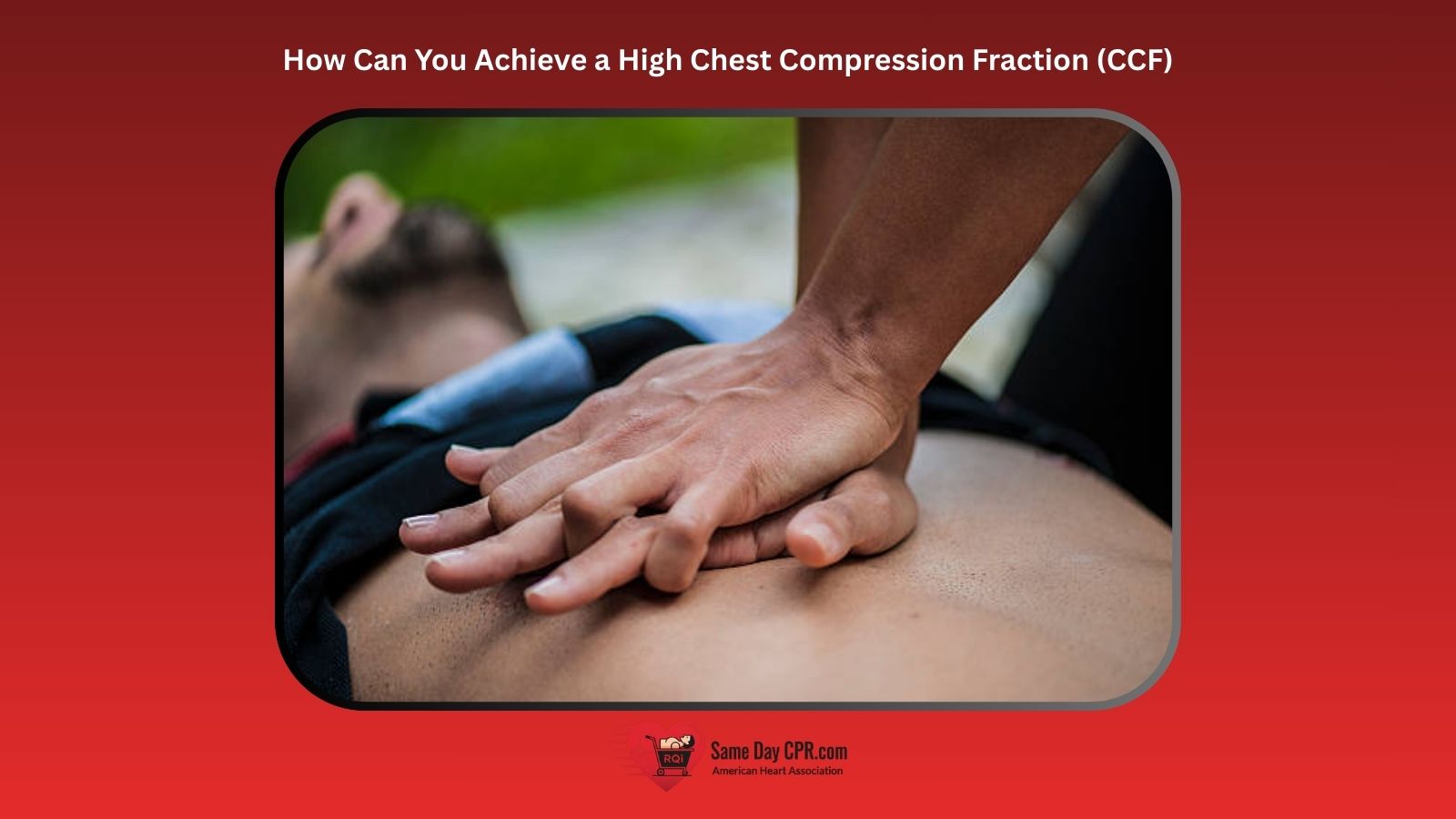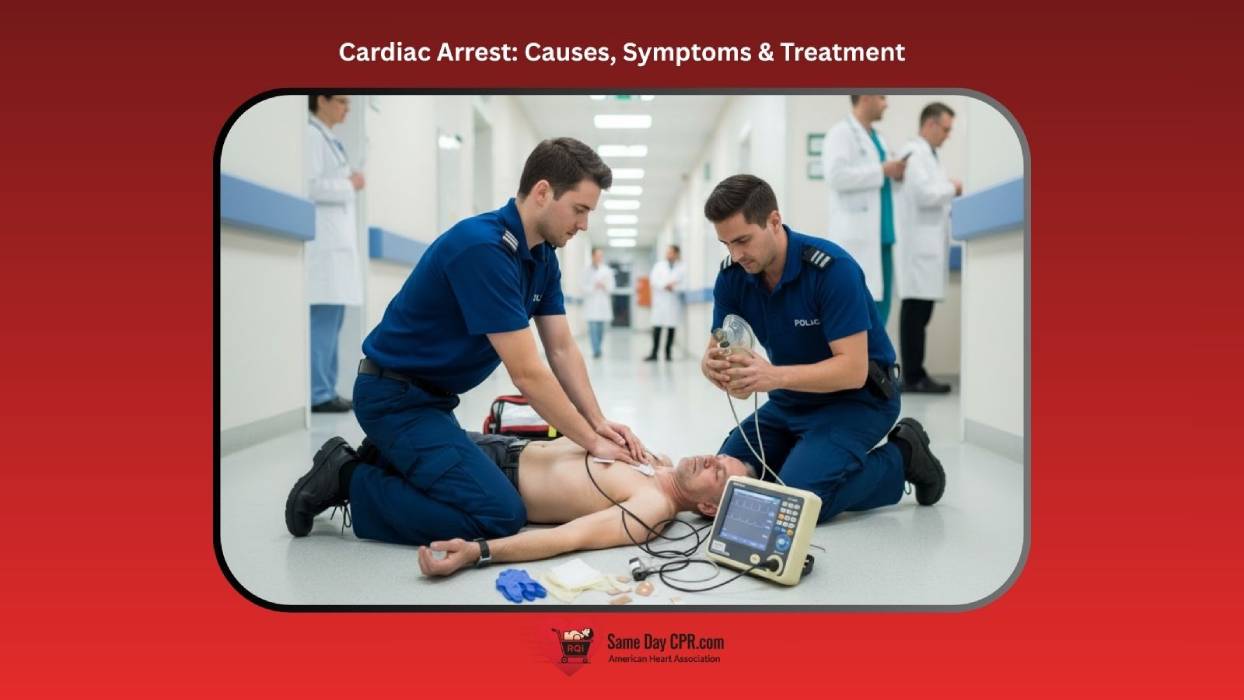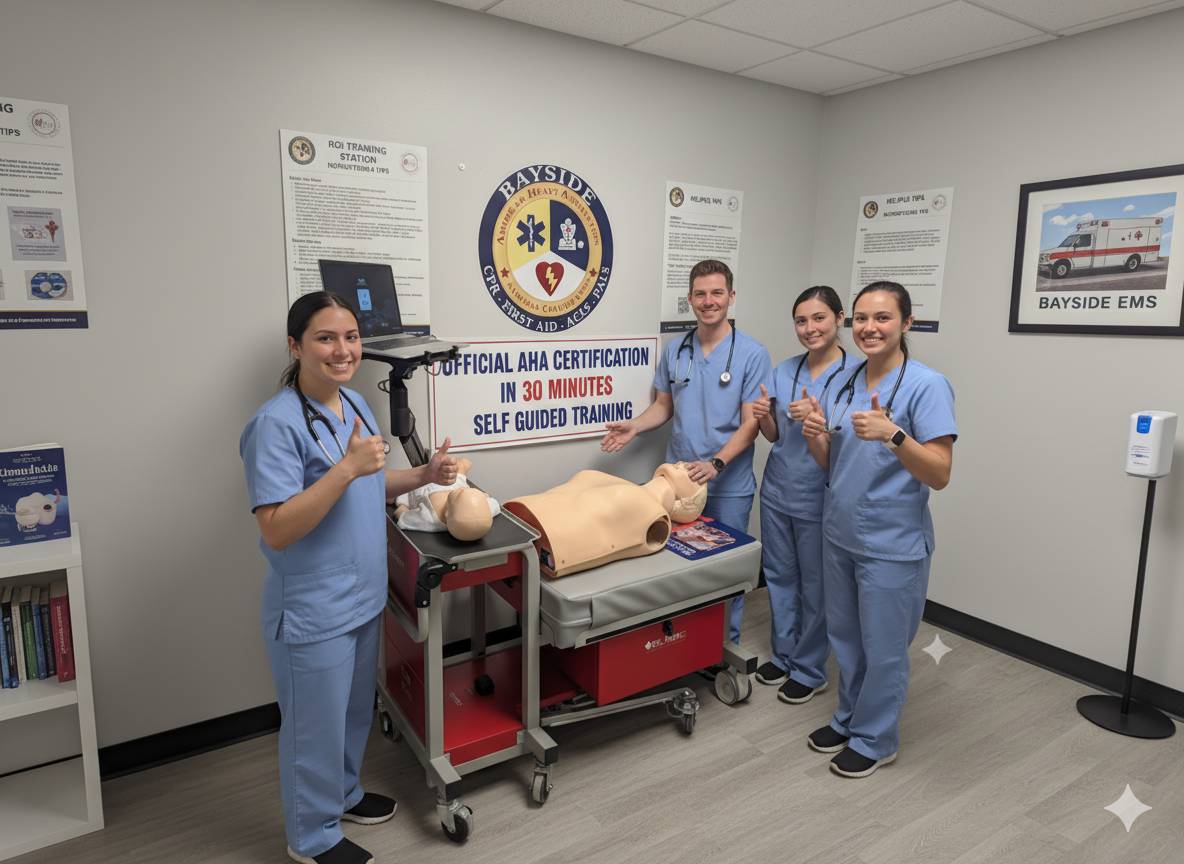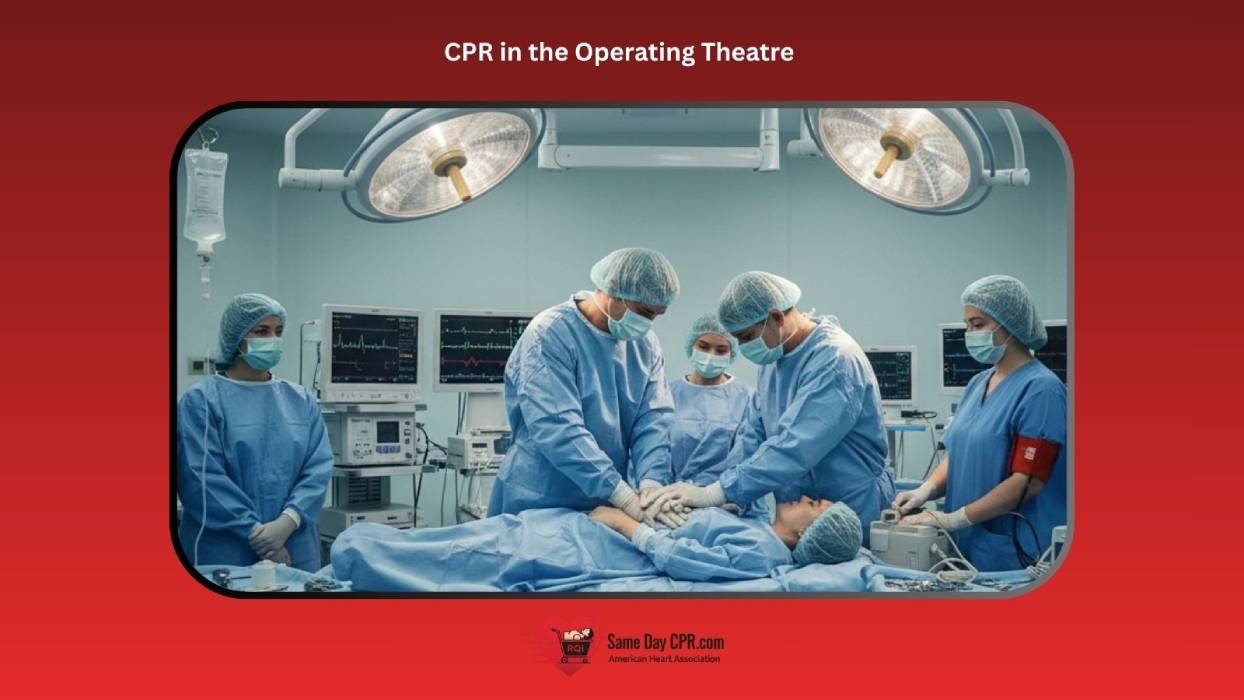As a healthcare professional, you know that every moment counts during cardiac arrest. The quicker you can restore a normal heart rhythm, the higher the chances of the patient surviving to discharge. A high chest compression fraction (CCF) is a key factor in boosting those odds. But how can you raise CCF during a code?
In this blog, you will explore this vital technique and how you can perform it confidently and consistently in your practice. You will learn the evidence that supports working toward a high CCF, as well as some of the emerging CPR technologies to improve CCF. You’ll be seeing these everywhere soon, if you aren’t already.
What is Chest Compression Fraction (CCF) in CPR
Chest Compression Fraction (CCF) is the percentage of time that chest compressions are actively being performed during Cardiopulmonary Resuscitation (CPR). It is a critical measure of CPR quality because continuous, uninterrupted chest compressions are essential for keeping a patient alive during cardiac arrest. The American Heart Association (AHA) recommends a minimum CCF of 60%, with a target of 80% or higher for optimal outcomes.
How CCF is Calculated
- Active Compression Time: This is the total time spent performing chest compressions.
- Total CPR Time: This is the entire duration of the resuscitation effort, from the start of CPR until the patient regains a pulse or the efforts cease.
- The Formula: CCF = (Total Active Compression Time / Total CPR Time) x 100%
Importance of Chest Compression Fraction
Chest Compression Fraction (CCF) matters because it measures how much of a resuscitation time you spend pushing on the chest. High CCF means more blood keeps moving to the brain and heart, which can help survival and recovery. If rescuers pause too long between pushes, organs get less oxygen, and chances of a good outcome drop. Keeping a steady pace, minimizing pauses, and staying focused during CPR helps the body get the oxygen it needs until advanced help arrives. In short, a strong, continuous effort during chest compressions gives the person the best shot at waking up and recovering well.
Evidence of High Quality Chest Compression Fraction
In the United States and Canada, data from 13,000 cardiac arrest patients were analyzed to assess survival and hospital discharge outcomes. NIH.gov reports that the study found:
- The median Chest Compression Fraction (CCF) was 74%, showing awareness of the importance of high CCF, even though it was below the ideal 80%.
- 25.6% of patients achieved ROSC (Return of Spontaneous Circulation), meaning their heart started beating again.
- Only 2.4% survived to hospital discharge, which is similar to other studies on out-of-hospital cardiac arrest (OHCA) where bystander CPR and AED use were not provided.
- A higher CCF increased the chances of achieving ROSC, but it did not improve survival to discharge.
Techniques For Achieving Chest Compression Fraction
When every second matters during CPR, keeping chest compressions steady makes a big difference. Here are some simple ways to keep that compression time as high as possible.
1. Minimize Interruptions
Try to keep chest compressions going as much as possible without long breaks. Every pause lowers the chances of blood reaching the brain and heart, so it’s important to stay focused and only stop when necessary, like for a rhythm check or defibrillation. Short, quick transitions help keep the flow strong.
2. Use Effective Communication
Clear teamwork can make CPR smoother and more efficient. Talking out loud about what you’re doing helps everyone stay on the same page and prevents confusion during stressful moments. Simple phrases like “switching” or “ready for shock” can keep the team organized and compression time high.
3. Proper Hand Placement
Placing your hands in the right spot on the chest is key to strong and effective compressions. The heel of your hand should be on the center of the chest, with your other hand on top, fingers lifted so only the heel presses down. This helps deliver steady pressure to the heart and keeps compressions consistent.
4. Proper Compressions Depth and Rate
Getting the right depth and speed is what makes compressions effective. Push hard enough to reach the recommended depth, and keep a steady rhythm without going too fast or too slow. Staying consistent helps blood flow properly and improves the chances of a good outcome.
5. High Quality Ventilations
When it’s time to give breaths, make sure they’re effective but not too forceful. A gentle, steady breath that just makes the chest rise is enough. Over-ventilating can waste time and reduce compression quality, so aim for controlled, quick breaths to keep oxygen moving.
6. Role Rotation
CPR can be tiring/fatiguing, especially when doing compressions for a long time. Switching roles every couple of minutes keeps rescuers from getting worn out and helps maintain strong, steady compressions. A planned rotation also reduces delays and keeps the team working smoothly together.
7. Regular CPR Training and Practice
The more often you practice, the more confident and prepared you’ll be during a real emergency. Regular training builds muscle memory, so actions become automatic even under stress. Practicing as a team also strengthens communication and coordination, which improves overall performance.
8. Use of Feedback Device
Modern CPR feedback devices can give instant guidance on depth, rate, and hand placement. These tools help rescuers adjust in real time and keep compressions within the right range. Using feedback can build better habits during training and improve quality during actual resuscitation.
9. Continuous Evaluation
It’s important to keep checking how well the team is performing throughout the process. Brief evaluations can spot problems like shallow compressions or slow role changes and give the chance to fix them right away. Continuous improvement helps raise chest compression fraction and overall CPR quality.
Factors that Reduce the Chest Compression Fraction (CCF)
- Ventilation Pauses: Stopping too long to give breaths can lower the time spent on compressions. Quick, gentle breaths that only make the chest rise are enough to keep oxygen moving without losing valuable seconds.
- Interruptions During Defibrillation: Delays often happen when preparing or delivering a shock. Keeping these breaks as short as possible ensures blood flow continues and the heart has a better chance of responding.
- Analysis of Heart Rhythm: Checking the rhythm is important, but long pauses during this step reduce compression time. Being quick and ready with equipment helps limit the stop and keeps compressions going strong.
- Rescuer Fatigue: Compressions can get weaker when rescuers get tired. Regular switching between team members keeps the effort strong and steady, giving the patient a better chance.
- Training and Practical Experience: Lack of practice often leads to slower actions and longer breaks. Frequent training builds confidence and skill, so rescuers move faster and keep compressions consistent.
- Availability and Use of Equipment: Sometimes, equipment delays, like setting up a defibrillator or airway device, can lower compression time. Being familiar with tools and keeping them ready helps reduce these pauses.
- Patient Handling and Transport: Moving a patient can cause interruptions in CPR. Planning and continuing compressions as much as possible during transport helps keep circulation steady.
- Environmental Conditions: Crowded spaces, noise, or unsafe surroundings can make CPR harder and cause longer stops. Staying calm and adapting to the setting helps rescuers keep compressions going.
Strategies for Sustained High Chest Compression Fraction (CCF)
In short, achieving a high chest compression fraction comes down to focus, teamwork, and practice. The more you minimize pauses, communicate clearly, and rotate roles, the stronger and more consistent your compressions will be. Tools like feedback devices and regular training can make a big difference, helping you stay confident and effective when it matters most. Remember, every second of compression keeps blood moving and gives your patient a better chance at survival. By aiming for a high CCF, you’re not just following guidelines; you’re giving someone the best possible shot at recovery.








